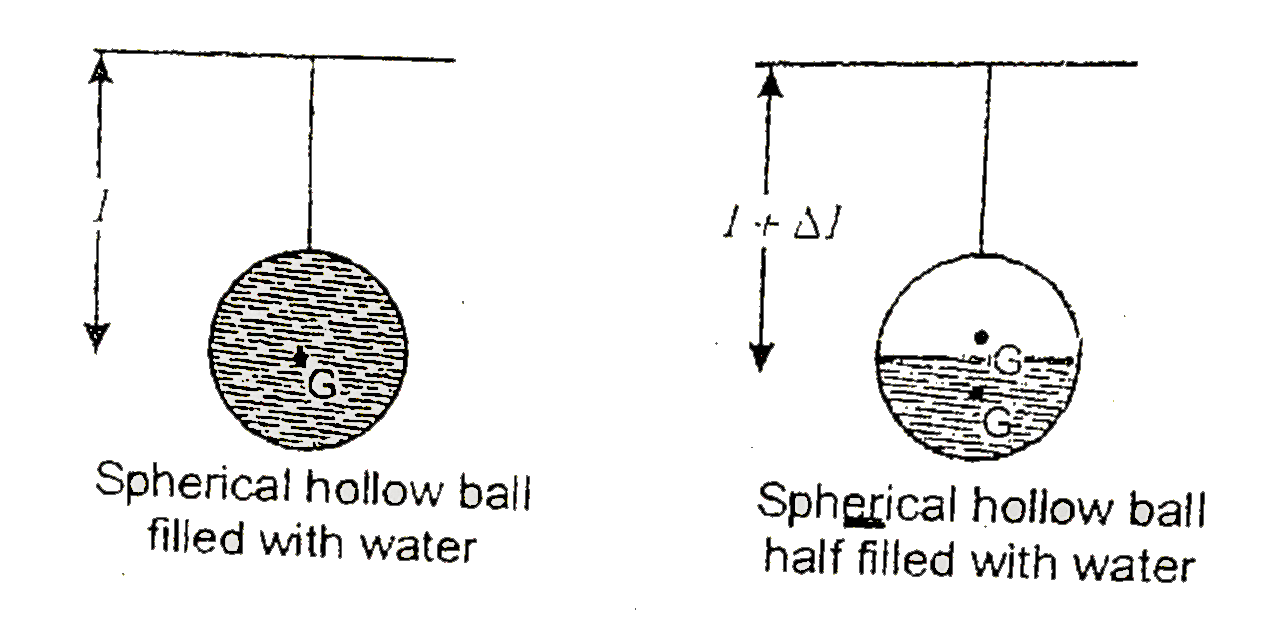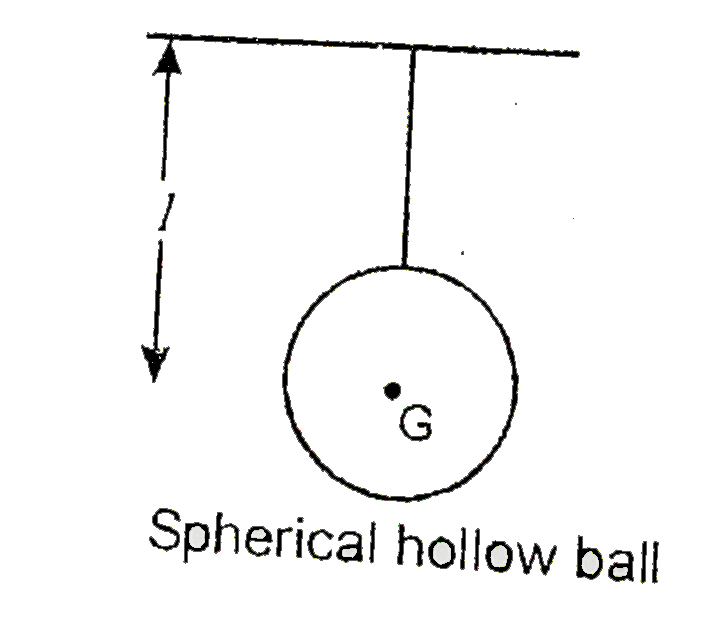The bob of a simple pendulum is a spherical hollow ball filled with water. A plugged hole near the bottom of the oscillating bob gets suddenly unplugged. During observation, till water is coming out, the time period of lscillation would.
first decreased and then increase to the original value
first increase and then decrease to the original value
remain unchanged
increase towards a saturation value
The correct Answer is:B
T<T1>(T2=T)

T=2π√lg,T=2π√l+Δlg

T2=2π√lg=T.
and T1>T2
Hence, time period first increases and then decreases to the original value.
Topper's Solved these Questions
- SIMPLE HARMONIC MOTION Book:RESONANCEChapter:SIMPLE HARMONIC MOTION Exercise:Advanced Level Problems
Explore 13 Videos
- SIMPLE HARMONIC MOTION Book:RESONANCEChapter:SIMPLE HARMONIC MOTION Exercise:Exercise- 3, PART - I
Explore 20 Videos
- SEMICONDUCTORSBook:RESONANCEChapter:SEMICONDUCTORSExercise:Exercise 3
Explore 88 Videos
- TEST PAPERSBook:RESONANCEChapter:TEST PAPERSExercise:FST-3
Explore 30 Videos
Similar Questions
The bob of a simple pendulumis a ball full of water. If a fine hole is made in the bottom of the ball, what will be its effect on the time period of the pendulum?
View SolutionA hollow sphere is taken as bob of a simple pendulum. This hollow sphere is filled with fine sand. There is a small hole at the bottom of this sphere through which the fine sand leaks out. How does the time period of this simple pendulum alter? Discuss.
View Solution
Knowledge Check
The bob of a simple pendulum is a spherical hollow ball filled with water. A plugged hole near the bottom of the oscillating bob gets suddenly unplugged. During observation, till water is coming out, the time period of oscillation would
Afirst increase and then decrease to the original valueBfirst decrease and then increase to the original valueCremain unchangedDincrease towards a saturation valueThe bob of a simple pendulum is a hollow cylinder, with a small hole in the bottom. It is filled with sand and set into oscillation. Its periodic time (T) is measured at regular intervals. As the sand starts coming out we find that
AT increases with timeBT does not change with timeCT first decrases and then increasesDT first increases and then decreasesAssertion: The bob of a simple pendulum is a full of water if a fine hole is made at the bottom of the of the ball , then the time period will no more remain constant
Reason : The time period of simple pendulum does not depend open massAIf both assertion and reason are true and the reasopn is correct explanation of the assertionBIf both assertion and reason are true and but not the correct explanation of assertionCIf assertion is true but the reason is falseDIf both assertion and reason are false
A simple pendulum consists of a bob, which is a hollow sphere filled with a liquid completely. If a hole is made into the sphere at its bottom so that the liquid starts flowing out of it, how will the time period of the pendulum be affected? Consider that the liquid has uniform density.
View SolutionA hollow sphere filled with water through a small body in it is then hung by a long thread and made to oscillation As the water slowly force end of the hole at the bottom the period of oscillation will
View SolutionAssertion : The bob of a simple pendulum is a ball full of water, if a fine hole is made in the bottom of the ball, the time period first increases and then decreases.
Reason : As water flows out of the bob the weight of bob decreases.
View SolutionAssertion : The job of asimple pendulum consits of a hollow bal full of water and when a hole is made at the bottom of ball its time period first increases and then decreases
Reason : Weight of the ball decreases as water flows out of ut
View SolutionA metallic sphere is filled with water and hung by a long thread. It is made to oscillate. If there is a small hole in the bottom through which water slowly flows out, the time period will
View Solution
